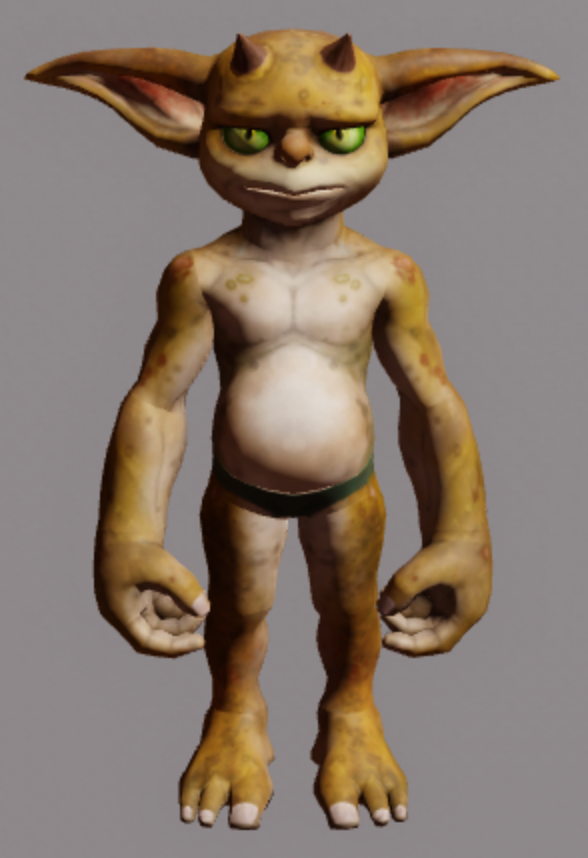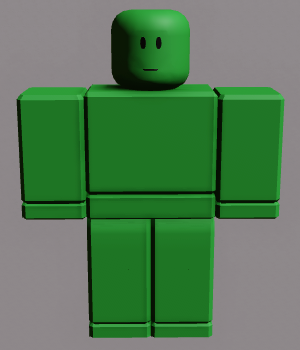A head part that supports facial animation is a specialized skinned head MeshPart. This type of body part allows you to:
- Set default custom facial expressions.
- Trigger emotes that combine both face and body animations.
- Equip face accessories that deform with your facial expressions. For example, facial hair moves accordingly when the character changes facial expressions.
An animatable head model contains an internal facial rig, or bone structure, that drives the deformation of the viewable geometry. When creating a dynamic head in a 3D modeling software, modelers save these bone deformations as individual poses.
When importing a head that supports facial animation into Studio, Studio creates a FaceControls instance you can use to access and combine these individual poses to create expressions and animations. Unlike typical rigged models, you cannot access the facial Bones of a head mesh directly in Studio.
For information on implementing heads in Studio, including information on how to import custom heads and face accessories in addition to a reference experience and example model files, see Using Heads in Studio.


Animating Heads
You can animate any supported head through the Animation Editor by manually setting poses on the animation track, using the Face Animation Editor to quickly create complex expressions, or using the Animation Capture tool to automatically track facial movements from your webcam.
After you create, save, and publish a head animation to Roblox, you can play the animation from a script or replace a character's default animation with your new animation.
Creating Basic Heads
Using third-party modeling tools, you can either modify a rigged character model to meet head requirements, or create a head from scratch. For step-by-step instructions on how to add face bones, apply skinning, posing, and mapping poses on a head model in Blender, see Creating Basic Heads. This guide includes several reference files you can use to compare and track your progress.
Creating Face Accessories
Similar to creating heads, you can design and model face accessories using a third-party modeling software and import the models as a cosmetic Accessory in Studio. When created correctly, equipped accessories stretch and deform as the head animates and emotes.
See Creating Face Accessories for step-by-step instructions on setting up a reference model as a face accessory. This guide includes several project files you can use for reference and covers details on time-saving steps, such as auto-skin transfer.
FACS Poses Reference
Animatable heads use the Facial Action Coding System (FACS) as a universal system that allows modelers and animators to reference similar facial features and head mesh across different head models.
When creating your head in a third-party modeling software, see FACS Poses Reference for a list of the base facial poses, their descriptions, and video examples.